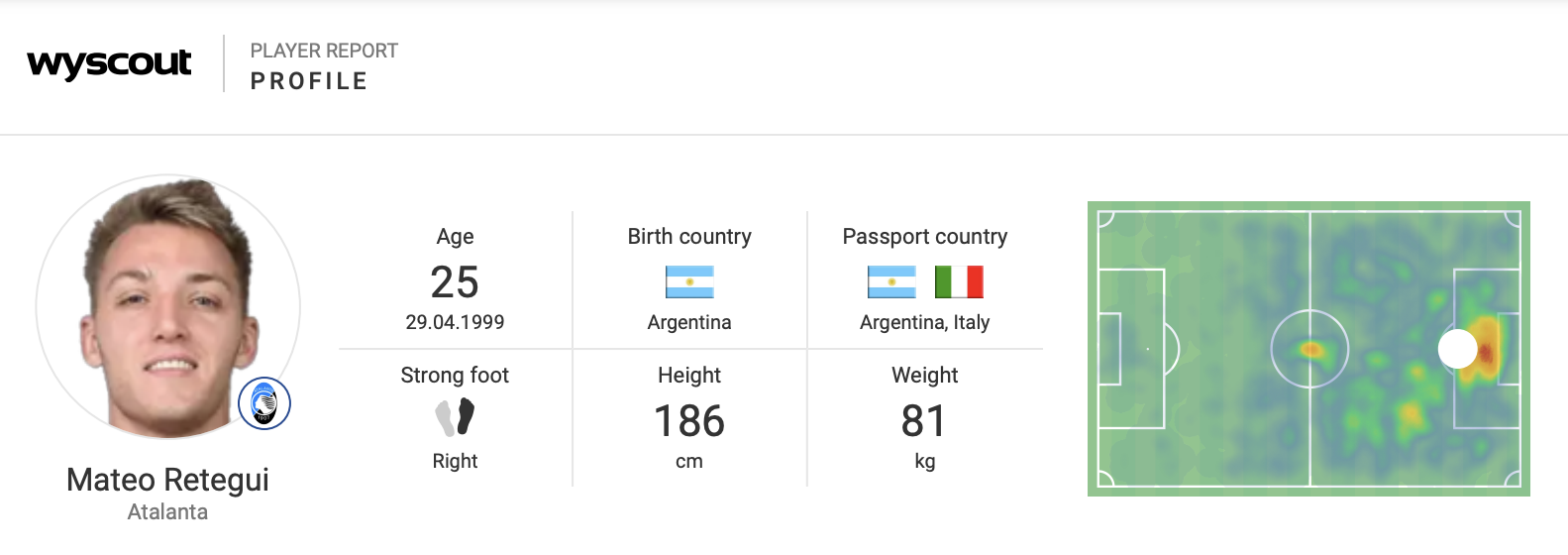The Rise of Retegui

In this article, we dissect the numbers behind Serie A’s surprise leading goalscorer and analyze the evolution of the Atalanta attacker.

His experience in Serie A was limited: just one season with a defensive team like Genoa, where he had managed to score only 7 goals in 29 appearances. Before that, Retegui had netted 30 goals for Tigre in Argentina and had even been called up by Roberto Mancini, then coach of the Italian national team, to address Italy’s chronic shortage of forwards.
Until a few months ago, Retegui didn't inspire much enthusiasm. But today, he’s the league’s top scorer, with 11 goals in 12 appearances.

Against Napoli, he only played fourteen minutes but closed out the 3-0 win for Atalanta at the Stadio Diego Armando Maradona with a right-footed finish, a volley he kept low and directed toward the far post with a slight curve.
Just a week earlier, he had scored twice with his left foot against Verona: one shot was a precise low drive from outside the box, and the other was a tap-in from within the penalty area. Before that, against Venezia, he lobbed the goalkeeper with a delicate chip—a technical skill that previously didn’t seem part of his repertoire.
At the start of the season, however, Retegui had primarily scored with headers (against Lecce, Torino, and Fiorentina). Right foot, left foot, or headers: this season, Retegui seems to have discovered a new ability to turn nearly every chance he gets into gold.

Mateo Retegui has made the most of every opportunity to step up his game. He arrived in Italy as a 24 year old, an age where there’s still room for learning and improvement. It could also be said that he benefited from the skepticism and elitism of the Italian public, surprising them with his current performances.
He had been labeled as a more physical than technical center-forward, skilled in the box but not exactly a true goalscorer. He was expected to fit with a smaller team, one fighting to avoid relegation. Instead, he’s found this new level in a team that’s the reigning Europa League champion.
Throughout 2024, his xG per 90 minutes has been 0.52. But with Genoa, he only exceeded his xG average four times in fourteen matches and often fell well short. At Atalanta, however, he’s already surpassed his average five times in twelve games, rarely falling far below. He doesn’t just get better chances; his overall play is smoother and simpler, thanks to Gasperini's team's network of off-the-ball movement and positioning.

Start your 15-day Wyscout free trial now.
Visit L’Ultimo Uomo website.

